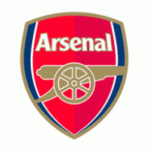Unpacking the Significance of South Africa’s Vibrant Flag at Sporting Events
Introduction
The South African flag is one of the most recognizable symbols of the country, representing its diverse culture, history, and people. It was first adopted in 1994 after the end of apartheid and has since become a significant part of the country’s identity. The flag is not only seen in official government buildings but also at various sports events, both locally and internationally. In this blog article, we will explore the history and meaning of the South African flag, its significance at sports events, and how it has evolved over the years.
History and Meaning of the South African Flag
The South African flag is a combination of two flags – the former flag of the Republic of South Africa and the flag of the African National Congress (ANC), the ruling political party at the time of its adoption. The former flag, also known as the “apartheid flag,” was a symbol of racial segregation and oppression, while the ANC flag was a symbol of the struggle against apartheid. The merging of these two flags was seen as a representation of the country’s journey towards unity and reconciliation.
The design of the current flag was chosen from over 7,000 entries in a national competition. The winning design was created by Frederick Brownell, a former South African State Herald, who incorporated elements from both flags into the new design. The flag consists of six colors – black, green, yellow, white, blue, and red, and has two horizontal bands of equal size with a green band at the top and a red band at the bottom. The colors and their placement hold significant meanings, with each color representing different aspects of the country.
The green band represents the fertility of the land and the country’s natural beauty, while the yellow band represents the country’s mineral wealth. The white band symbolizes the country’s peace and unity, and the blue band represents the sky and the oceans surrounding South Africa. The red band, which is also the largest band, represents the bloodshed and sacrifices made in the struggle for freedom and democracy. The central design of the flag, known as the “Y,” represents the convergence of diverse cultures, languages, and religions in South Africa.
Significance of the South African Flag at Sports Events
Sports have always been a unifying factor in South Africa, and the country’s flag plays a significant role in bringing people together. The South African flag is seen at various local and international sports events, from rugby and cricket to football and athletics. It is a symbol of pride, unity, and support for the country’s athletes and teams, and it brings people from different backgrounds together to support a common goal.
The flag is also a reminder of the country’s history and the progress it has made towards unity and reconciliation. It serves as a symbol of hope and inspiration for the future, showing that people from different races and cultures can come together and achieve great things. The South African flag has become a familiar sight at sports events, with fans proudly waving it and wearing it as a badge of honor.
One of the most iconic moments in South African sports history was the 1995 Rugby World Cup, which was hosted by South Africa. It was the first major sporting event held in the country after the end of apartheid, 1time and the South African flag played a significant role in the success of the event. The flag was seen everywhere, from the stands to the players’ jerseys, and it became a symbol of the country’s unity and triumph over racial divisions. The image of then-President Nelson Mandela, wearing a Springbok jersey and waving the South African flag, is one that will forever be etched in the minds of South Africans.
Evolution of the South African Flag at Sports Events
Over the years, the South African flag has evolved and taken on different forms at sports events. In the early years after its adoption, the flag was primarily seen in its traditional form, with fans waving it and wearing it as a bandana or a cape. However, as technology advanced, the flag’s presence at sports events also evolved.
One significant change was the introduction of the digital flag, which was first seen at the 2010 FIFA World Cup, also hosted by South Africa. The digital flag was a new way of displaying the flag, with fans using their mobile phones to create a synchronized display of the flag’s colors. It was a beautiful and innovative way of showing support for the country’s teams and athletes, and it quickly became a staple at sports events.
Another evolution of the South African flag at sports events is its integration into team uniforms. Many sports teams, both local and international, have incorporated the South African flag into their jerseys. This not only shows support for the country but also serves as a reminder of the team’s identity and the values they stand for.
Conclusion
In conclusion, the South African flag is more than just a piece of cloth; it is a symbol of the country’s journey towards unity, democracy, and progress. Its presence at sports events serves as a reminder of the country’s history and the progress it has made, as well as a symbol of support and unity for its athletes and teams. The flag has evolved over the years, but its significance remains the same – to bring people together and unite them under one flag, the South African flag.













